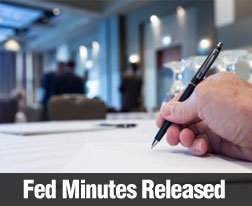What’s Ahead For Mortgage Rates This Week – November 09, 2015
 Last week’s economic reports included releases on construction spending and several labor-related reports including ADP payrolls, Non-Farm payrolls, average hourly earnings and weekly jobless claims. Freddie Mac reported that mortgage rates rose as the national unemployment rate decreased to 5.00 percent.
Last week’s economic reports included releases on construction spending and several labor-related reports including ADP payrolls, Non-Farm payrolls, average hourly earnings and weekly jobless claims. Freddie Mac reported that mortgage rates rose as the national unemployment rate decreased to 5.00 percent.
Labor Reports Show Mixed Results
Key readings on employment showed mixed results as ADP payrolls decreased to 182,000 from September’s downwardly revised reading of 190,000 private sector jobs added. U.S. jobs expanded to a reading of 271,000 jobs added in October, which exceeded expectations of 180,000 jobs added and September’s reading of 137,000 jobs added. This was the fastest pace for job growth in 2015 and fueled expectations that the Federal Reserve may raise interest rates in December. In addition, the national unemployment rate dropped to 5.00 percent in October, which was the lowest unemployment rate in seven years.
Weekly jobless claims rose by 276,000 new claims, which exceeded the expected reading of 263,000 new claims and the prior week’s reading of 240,000 new claims.
In testimony before The House Financial Committee, Federal Reserve Chair Janet Yellen said that the central bank’s objective was to regulate financial institutions “in a manner that promotes the stability of the financial system as a whole.” This indicates that the Federal seeks to prevent threats to major financial institutions that could result in a repeat of the great recession in 2008.
Chair Yellen also said that the Federal Reserve Board and the FDIC have written a rule requiring the largest financial institutions to show that any financial failure could be “resolved in an orderly manner through the bankruptcy court.” These comments suggest that the Federal Reserve has ongoing concerns about the stability of the largest financial institutions and the economy; this could cause the Fed to take a wait-and-see attitude on raising interest rates in December. The Fed is expected to address interest rates in its December meeting of the Federal Open Market Committee, which directs monetary policy for the Fed.
Mortgage Rates Rise, Construction Spending Dips
Average mortgage rates rose across the board last week according to Freddie Mac. The average rate for a 30-yar fixed rate mortgage rose by 11 basis points to 3.87 percent; the average rate for a 15-year fixed rate mortgage rose by 11 basis points to 3.09 percent and the average rate for a 5/1 adjustable rate mortgage rose by seven basis points to 2.96 percent. Discount points were unchanged at 0.60, 0.60 and 0.40 percent respectively.
Construction spending slowed in September to a reading of 0.60 percent which met expectations based on August’s reading of an increase of 0.70 percent.Construction spending slows as fall and winter seasons approach, but analysts are monitoring construction activity as low inventories of available homes continue to increase demand for homes and home prices in many areas.
What’s Ahead
Next week’s scheduled releases for economic reports are slim; no reports are scheduled for Monday and Tuesday markets are closed for the Veterans Day holiday. Freddie Mac will release mortgage rates on Thursday and the weekly Jobless Claims report will also be released. Other scheduled reports include retail sales, retail sales except automotive sector and the University of Michigan’s report on consumer sentiment.

 A number of economic reports released last week indicate mixed economic progress. The 20-City Home Price Index released by S&P Case Shiller showed that August home prices rose, but New Home Sales dropped in September. The Federal Open Market Committee of the Federal Reserve indicated that it may reserve the target federal funds range at its next meeting in December.
A number of economic reports released last week indicate mixed economic progress. The 20-City Home Price Index released by S&P Case Shiller showed that August home prices rose, but New Home Sales dropped in September. The Federal Open Market Committee of the Federal Reserve indicated that it may reserve the target federal funds range at its next meeting in December. The National Association of Home Builders (NAHB) / Wells Fargo Housing Market Index reported that home builder confidence rose by one point to a reading of 62 for September. This was the highest reading since November 2005, when the NAHB reported a reading of 68 for home builder confidence. Any reading above 50 indicates that more builders are confident about housing market conditions than those who are not.
The National Association of Home Builders (NAHB) / Wells Fargo Housing Market Index reported that home builder confidence rose by one point to a reading of 62 for September. This was the highest reading since November 2005, when the NAHB reported a reading of 68 for home builder confidence. Any reading above 50 indicates that more builders are confident about housing market conditions than those who are not.